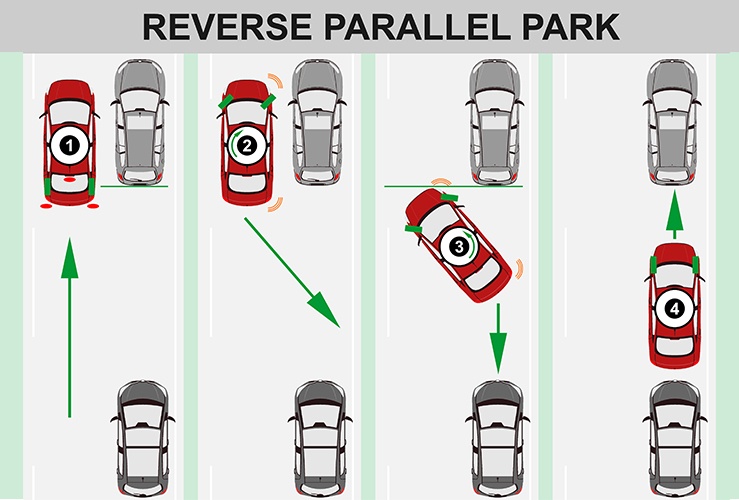Parallel parking is considered one of the trickiest driving manoeuvres, in the same league as three-point turns and reverse-bay parking.
If you've already passed your test, then you may recall the stress of being asked by your examiner to perform a parallel park.
And if you haven't yet passed, it's worth going over the procedure for an effective parallel park, so you're ready the next time you're asked to perform one.
As with so many things, practice makes perfect.
Here's how to complete a parallel park (sometimes called a reverse parallel park) in 6 simple steps - although it is often referred to as the 'parallel parking 121 method' in the UK.
'121' refers to the number of turns: one turn towards the kerb, two turns the other way at the 45-degree angle, and one turn to straighten up once the vehicle is parallel with the kerb.
The following guide assumes you are parking in a space with vehicles to the front and rear, on the right-hand side of the road.
Before you begin: Safe parallel parking
It is best practice to glance regularly at the rear-view mirror and conduct numerous over-the-shoulder blind spot checks. If you see a pedestrian or an approaching vehicle, you must pause until they are a safe distance away, using the footbrake and the handbrake as necessary.
When doing the test, the examiner must see you perform rear-view, side-view and over-the-shoulder blind spot checks. If you need to pause to let someone or something pass, always check your mirrors and blind spot before moving off again.
Parallel parking reference points
Throughout the parallel park, you’ll need to make note of reference points. These help ensure you do not bump into parked vehicles or the curb.
The key reference points are usually: the front parked car’s rear bumper/rear wheels (and the corresponding areas of your car); the rear car’s number plate; and the front car’s rear in relation to your roadside wing mirror (or the front of your car). How these are used will become clear in the following steps.
(Reverse) Parallel Parking in 6 Steps:
- Identify a suitable parking spot. This may sound obvious, but you want to find a space with enough room to manoeuvre into, without risk of damaging the adjacent vehicles.
- Line up your rear wheels with those of the front parked car. Alternatively, ensure your rear bumper is aligned with the rear bumper of the front car. Ensure you are around two feet away from the front vehicle.
- Put your car into reverse, then turn the steering wheel all the way to the right. Begin reversing until the car is at a 45-degree angle, or until you can see the rear car's number plate in the centre of your left wing mirror. You will now be partially in the parking space.
- Straighten up your steering wheel, and reverse into the parking space, maintaining a slow, steady speed.
- Once the front of your vehicle is aligned with the rear of the front car, turn your steering wheel all the way left, then reverse into the parking bay. (You might also use your left wing mirror as a reference point when it aligns with the rear of the front car.)
- Straighten up the wheels and ensure the vehicle is equidistant from each of the adjacent vehicles.
How To Parallel Park When There is No Car Behind You
Sometimes you need to parallel park behind a single vehicle, with no vehicle to the rear. Here's how:
- Align your rear bumper with that of the parked car. Leave about two feet between vehicles.
- Shift into reverse gear. Turn the wheel all the way right then look in your right wing mirror and reverse. Look for the curb in the background (in the mirror).
- Straighten up your wheel, then back up until you see your rear tyre in the mirror getting close to the curb. Once it is near, turn the wheel in the opposite direction and move steadily into the space.
- Look in your right wing mirror to check you are close enough to the curb.
NB: if your position is not right, you do not need to perform the entire manoeuvre again. You only have to move out of the space at a 45-degree angle, stop when the front of your car is aligned with the rear of the parked car, then reverse back into the space.
Parallel Parking Tips: Common mistakes to avoid:
- Choosing a parking spot that isn’t large enough for the vehicle
- Failing to conduct blind spot checks
- Failure to configure the correct distance between vehicles
- Dry steering: when you turn the wheels while the car is stationary - which can damage the tyres.





